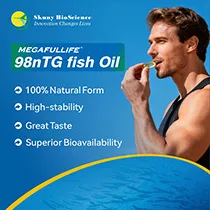Light in the dark: Shaklee Corporation unveils high-potency Vita-D3 against winter slump

01 Dec 2022 --- Wellness and sustainability brand Shaklee Corporation has launched Vita-D3 to raise levels of vitamin D in the bloodstream to support bone health, heart health, metabolic and immunity. The move comes amid news that approximately 95% of the US population do not meet the daily requirement for vitamin D1.
The supplement 3.4 Vita-D3 provides 2.000 IU of high-potency vitamin D3 and is backed by two company-commissioned clinical studies.
“We can’t stress enough the importance of having healthy levels of vitamin D, especially as our hours of sunlight lessen in the winter months and it’s nearly impossible to get this vitamin naturally,” says Roger Barnett, chairman and CEO at Shaklee Corporation.
Meanwhile, the UK Office for Health Improvement and Disparities (OHID) has launched an inquiry into the potential of vitamin D supplements and fortified F&B to impact the health of its residents. The review aims to raise awareness of vitamin D while compiling views from citizens, civil groups, health experts and the F&B industry to improve intake across demographics.
Minimizing the risk factors
Vitamin D is absorbed in the blood and converted to the active form (a secosteroid hormone) and a storage form (25-hydroxyvitamin D). It functions more like a hormone than a vitamin.
Sufficient vitamin D is important for a wide array of health benefits. In winter, when sun exposure is low, supplementing with vitamin D supports overall health and well-being. Supplementing with vitamin D supports overall health and well-being, especially in winter when UV levels are low.
Supplementing with vitamin D supports overall health and well-being, especially in winter when UV levels are low.
“We offer a safe and proven vitamin D supplement in its most potent form to support bone, heart, metabolic, and immune system health,” explains Jamie McManus, MD, Fellow of the American Academy of Family Physicians (FAAFP) and chair of medical affairs, Shaklee.
Additional benefits of vitamin D intake include calcium absorption for strong bones and teeth and the facilitation of healthy cell development.
However, the French Agency for Food, Environmental and Occupational Health & Safety (ANSES) warned of the dangers of vitamin D overdose, especially for infants. As a result, it is urging the public to opt for vitamin D medication rather than food supplementation.
Researchers have also flagged that hypervitaminosis D, a condition resulting from overconsumption of vitamin D, is on the rise.
Discovery of benefits
The seminal discovery that sunlight was crucial in preventing nutritional rickets was made in 1890 by Theobald Palm, a medical missionary who contrasted the prevalence of rickets in northern European urban areas with similar areas in Japan and other tropical countries.
Palm surmised that exposure to sunlight prevented rickets and observed its working over the next 40 years, which led to an understanding of ultraviolet irradiation and its role in vitamin D synthesis. This opened a new era of appreciation for the curative powers of the sun and “the sunshine vitamin.” His observations were considered obscure but had a potent effect on the development of photobiology.
“Vitamin D is produced when sunlight touches our skin, and very few foods in nature contain vitamin D, with fortified foods – primarily cow’s milk – being responsible for most of the vitamin D in the US diet,” says McManus.
“As daylight savings time ends, we have less opportunity to absorb vitamin D through sunlight. Therefore, US citizens should supplement their vitamin D intake, especially during winter.”
Other risk factors for low vitamin D status include darker-pigmented skin color and obesity.
In other industry developments, DSM elaborated on the potential of calcifediol, the active form of vitamin D, in the absorption of the vitamin, in its latest white paper, Nutritional solutions to optimize immunity.
By Inga de Jong












